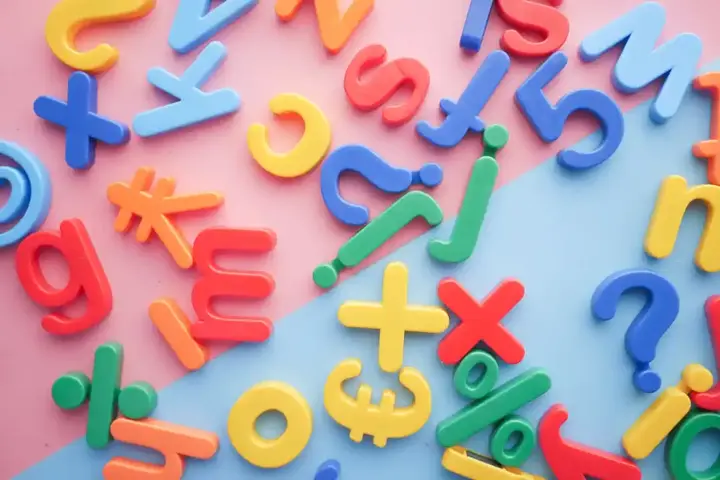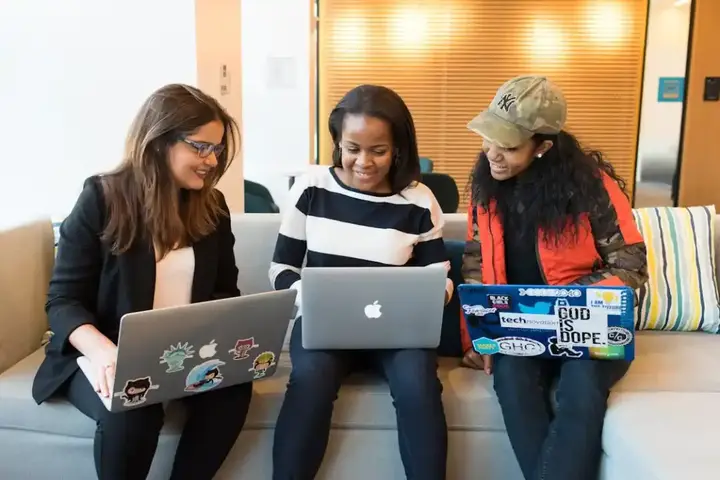How to learn any language in a short time? 8 practical tips
There is no magic way to learn any language in a short time, but there are some tips that can help you speed up the learning process, with commitment and perseverance, you can accomplish a lot. At the same time, the speed of language learning varies from person to person. They depend on such factors as:
Show key points
- There is no quick fix to mastering a language, but with dedication and consistent effort, significant progress can be achieved.
- Various factors such as age, motivation, and time commitment strongly influence the speed at which someone learns a new language.
- Setting realistic, measurable goals and establishing a daily study routine are crucial steps in progressing through language learning levels.
- ADVERTISEMENT
- Immersing yourself in the language by listening to media, reading materials, and interacting with native speakers accelerates improvement.
- Learning frequently used vocabulary through methods like flashcards and mobile apps builds a solid language foundation.
- Understanding basic grammar rules is essential, though fluency comes from practicing the language despite imperfect grammar.
- Applying spaced repetition enhances long-term memory retention and helps make new information stick more effectively over time.
Your age: It is easier for children to learn new languages.
Your motivation: The more motivated you are to learn a language, the faster you will learn.
Your time and effort: The more time and effort you put into learning a language, the more positive results will be achieved.
There is no doubt that mastering a language requires a lot of practice, but we are talking here about learning and dealing with a language, which allows it to be used in real life. In that regard, we had previously mentioned about what are the most important languages required in the labor market? And how to learn it for free? (Please include the inner link to the article) Now, here are some proven practical tips, which are suitable for all levels from beginner to advanced. Remember that there is no standardized way to learn a language. But the best way is to find a method that works for you and sticks to it.
Recommend
1. Set realistic goals:

Decide what you want to achieve by learning the language. Do you want to speak fluently? Do you want to be able to read and write? Or understand movies and TV shows? Or reading books and newspapers?
Select the language level you wish to reach (beginner, intermediate, advanced).
Set short, long-term, and measurable goals. Break down your goals into smaller, achievable goals.
Set a specific time each day to practice the language. That is, the time you can devote to learning every day. Keep it up.
2. Be with the language as a companion:

Listen to music, podcasts, TV shows, and movies in the language you learn.
Read books, magazines and newspapers in the target language.
Talk with native speakers of the language as much as possible.
Change the language of your phone and computer to the language you want to master.
Focus on listening and speaking skills before reading and writing.
Use mobile apps and games to learn the language.
Listen to audiobooks in the language you are learning.
Focus on the basic vocabulary:

Learn the most common words and phrases in the language.
Use flashcards or mobile apps to memorize vocabulary, or keep a handy notebook to write and memorize.
Practice using new words and phrases in sentences and in conversation.
Use mobile apps like AnkiDroid or Memrise for memorization training.
4. Learn the basic rules:

Learn grammar basics such as tenses, pronouns, conjugations, and adjectives.
Don't overfocus on grammar, it's important to start speaking and writing in the language even if your grammar isn't perfect. Don't let advanced grammar get in the way of your progress.
Use grammar exercises to enhance your understanding of the rules.
5. Language practice, practice, practice:

●Find opportunities to talk with native speakers.
●Join a language club or group.
● Find language lessons or teachers online.
● Use mobile apps like HelloTalk or Tandem to talk to people from all over the world.
● Register yourself speaking the language and review your recordings.
If you can, travel to a country that speaks the language you are learning.
6. Use the "spaced repeat" technique:

It is an educational technique based on the principle of psychology that suggests that the spaced repetition of information helps to improve its long-term retention.
How does spaced repeat technology work?
Initial learning: You learn new information for the first time.
First Review: Review the information after a short period of time (such as a day or two).
Second review: Review the information after a longer period of time than the first review (such as a week or two).
Third review: Review the information after a longer period of time than the second review (such as one or two months).
Post-review: You keep reviewing information at increasing intervals until it becomes firmly in your memory.
7. Keep learning with Duolingo:

It is a mobile application and website for learning languages. It makes many of its services available for free, making it an excellent option for those who want to try learning a new language without the obligation to pay a fee.
Duolingo offers more than 30 courses to learn 38 different languages, covering the basics in each language, including:
rules
vocabulary
uttering
Conversation
The free plan gives access to most Duolingo content, including:
Lessons
Gaming
Skills tests
society
8. Use/apply the "Learning by Context" method to understand the rules.

Contextual learning is an educational method that focuses on learning new concepts in a realistic, meaningful context.
In other words, instead of memorizing information in isolation, learners learn how to use information in real situations.
How does the contextual learning method work?
● Exposure to real-life situations: Learners are exposed to real-life situations that include the concepts they learn.
● Observe how concepts are used: Learners observe how concepts are used by others in these situations.
● Concept experience: Learners experiment with using concepts themselves in similar situations.
![]()
My strategies for developing business confidence
Asking for a raise taught me a powerful lesson: confidence and self-advocacy matter. Despite battling impostor syndrome and anxiety, I learned to challenge my inner critic, celebrate my wins, and take risks. That one bold step led to growth, success, and a stronger belief in myself ever since. more- ADVERTISEMENT
![]()
75% of the global diet is produced by just 12 plants and 5 different animals
Our diets rely on just a few crops, making them fragile and less nutritious. Embracing lesser-known, diverse foods like millet and winged beans can boost health, support farmers, and protect against climate and crop threats. more- ADVERTISEMENT
![]()
The dark side of early retirement
Early retirement sounds dreamy, but it's not all sunshine—many do it because they’re unhappy at work, feel hopeless, or want more time. But the risks are real: loneliness, regret, running out of money, and losing purpose. Think twice before jumping ship too early. more- ADVERTISEMENT
![]()
How to learn German for free in 6 months
Learning German opens doors to job and study opportunities in Germany, Austria, and Switzerland. With dedication—three hours a day—you can reach intermediate level in six months. YouTube channels like Deutsch mit Mira, German with Mr. Shehata, and Khaled Bozan make learning fun and accessible for everyone. more- ADVERTISEMENT
![]()
The biggest mystery in geology - when plate tectonics began to reshape the Earth
On February 6, 2023, a powerful earthquake struck the eastern Mediterranean, shifting the Anatolian Peninsula by 11 meters and killing nearly 60,000 people. This disaster highlights how tectonic plate movements reshape Earth's surface and cause devastating quakes by releasing built-up pressure at plate boundaries. more- ADVERTISEMENT
![]()
Reading useless books: Here's a better way to read
Reading books can be slow, outdated, and too passive for today’s fast-paced world. Active learning—like discussing, questioning, and applying knowledge—plus modern tools like podcasts and online courses, make learning faster, deeper, and more fun. more- ADVERTISEMENT
![]()
Why does the Arab lands have so much oil?
Arab countries hold vast oil and gas reserves, with fields like Saudi Arabia’s Ghawar and Safaniya standing out for size and output. Their conventional oil is easier to extract and purer than other types. This wealth stems from rich ancient biodiversity buried under the region's lands over millennia. more- ADVERTISEMENT
![]()
3 undeniable signs that you are on the right path
When fear grips you, isolation surrounds you, and strange coincidences start to appear—don’t worry. These are signs you’re on the right path. Embrace the journey, trust your growth, and remember: returning to your true self is the most magical part of it all. more- ADVERTISEMENT
![]()
Elon Musk's Brain Chip - Facts and Oddities
Elon Musk's Neuralink has stirred buzz with its brain chip, Brain-Link, aiming to let humans control devices with their minds. Though still experimental, early tests show promise—like a paralyzed person using it to control a computer—while sparking ethical concerns over privacy, safety, and equality. more- ADVERTISEMENT
![]()
Social entrepreneurship: How do your projects make a positive impact on society?
Social entrepreneurship is all about using innovative ideas to solve social and environmental problems while creating jobs and boosting the economy. It’s growing fast in the Arab world, especially in places like Egypt and the UAE, offering hope for a better, more sustainable future despite funding and awareness challenges. more- ADVERTISEMENT





















